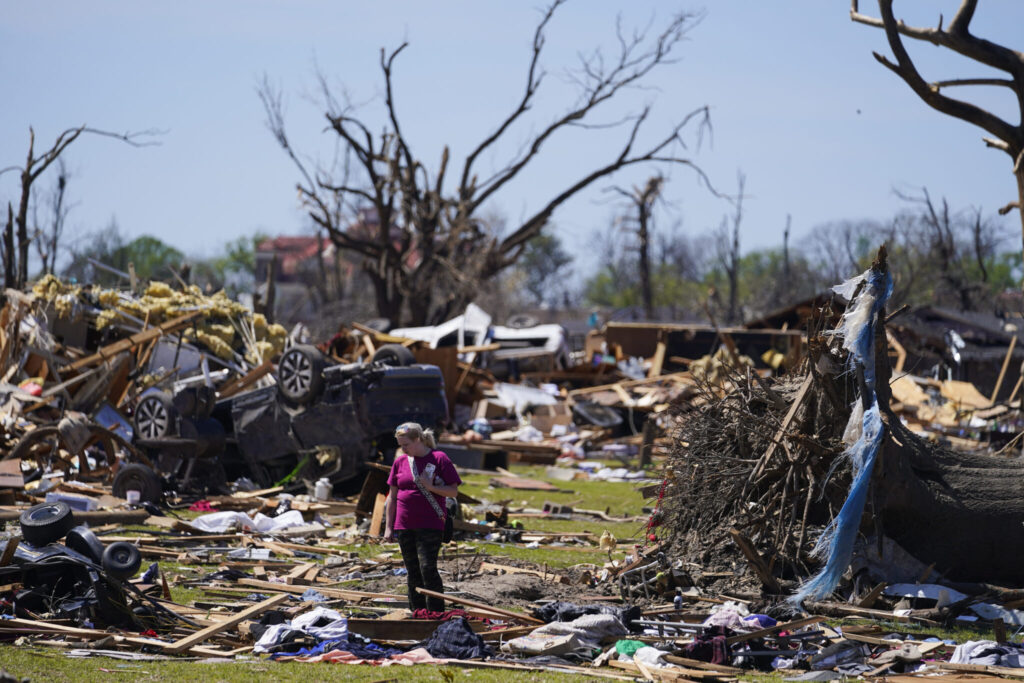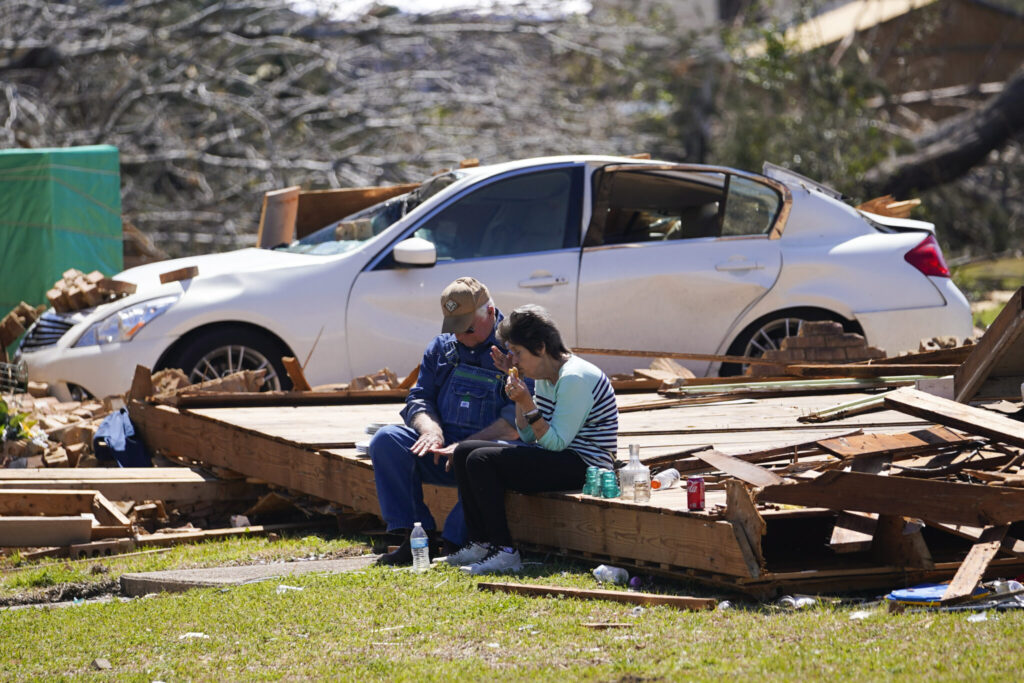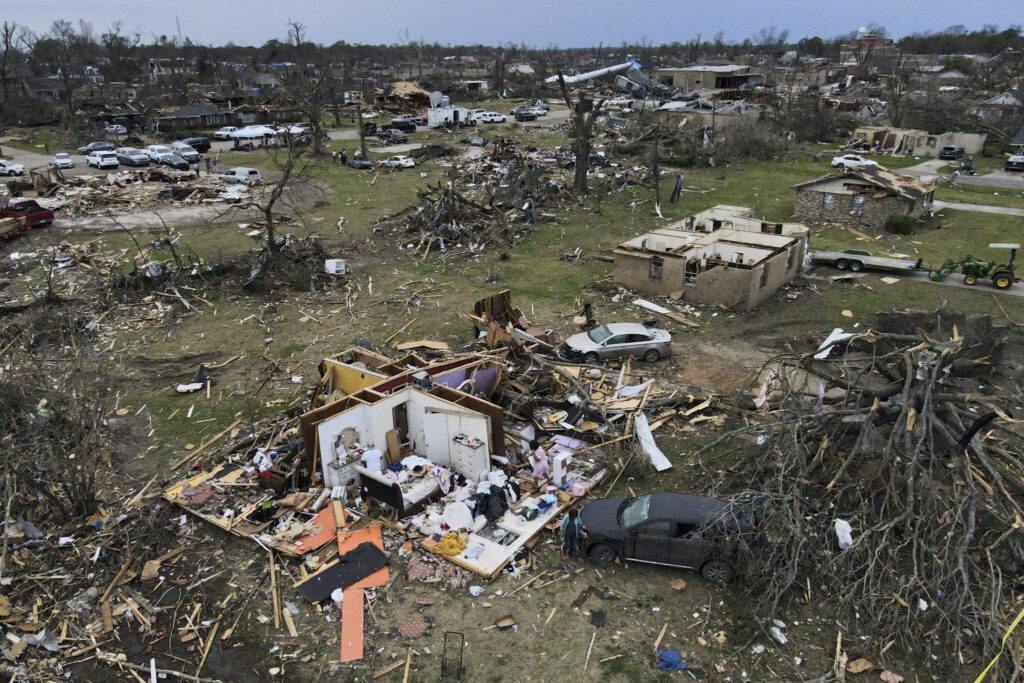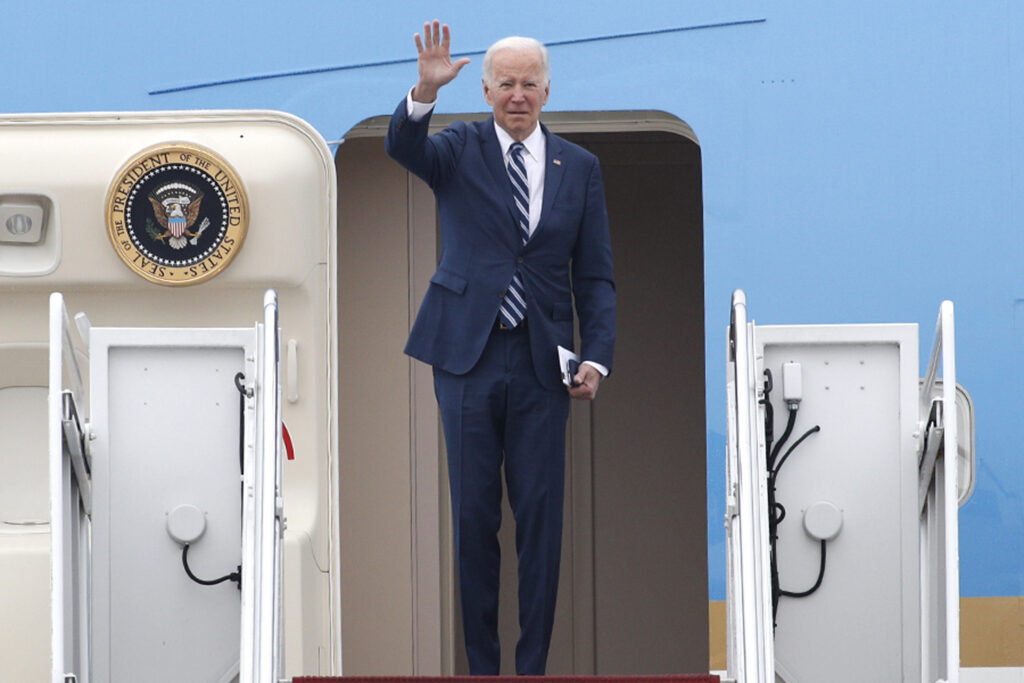President Joe Biden and first lady Jill Biden are expected to visit Rolling Fork on Friday to survey the damage caused by an E-F4 tornado and meet with first responders and survivors. Biden is expected to announce that the federal government will cover the total cost of the state’s emergency measures for the next 30 days, including overtime for first responders and debris cleanup. The president and first lady Jill Biden will survey the damage, meet with homeowners impacted by the storms and first responders and get an operational briefing from federal and state officials. They’re expected to be joined by Gov. Tate Reeves, Mississippi Sen. Cindy Hyde-Smith and Rep. Bennie Thompson. The Associated Press has the story:
Biden heads to Miss. town ravaged by tornado
Newslooks- WASHINGTON (AP)
President Joe Biden on Friday will visit a Mississippi town ravaged by a deadly tornado even as a new series of severe storms threatens to rip across the Midwest and the South.
Last week’s twister destroyed roughly 300 homes and businesses in Rolling Fork and the nearby town of Silver City, leaving mounds of wreckage full of lumber, bricks and twisted metal. Hundreds of additional structures were badly damaged. The death toll in Mississippi stood at 21, based on deaths confirmed by coroners. One person died in Alabama, as well.

Biden is expected to announce that the federal government will cover the total cost of the state’s emergency measures for the next 30 days, including overtime for first responders and debris cleanup. The president and first lady Jill Biden will survey the damage, meet with homeowners impacted by the storms and first responders and get an operational briefing from federal and state officials. They’re expected to be joined by Gov. Tate Reeves, Mississippi Sen. Cindy Hyde-Smith and Rep. Bennie Thompson.
In a statement after the tornado, Biden pledged that the federal government would “do everything we can to help.”
“We will be there as long as it takes,” he said. “We will work together to deliver the support you need to recover.”
Presidents regularly visit parts of the U.S. that have been ravaged by natural disasters or suffered major loss of life from shootings or another disaster. Republicans have criticized Biden for not yet making a trip to the site of a toxic chemical spill in a small Ohio town. He also has to decide whether to visit Nashville after three children and three adults were shot and killed at Covenant School.

Last week’s severe weather makes life even more difficult in an area already struggling economically. Mississippi is one of the poorest states, and the majority-Black Delta has long been one of the poorest parts of the state — a place where many people live paycheck to paycheck, often in jobs connected to agriculture.
Two of the counties walloped by the tornado, Sharkey and Humphreys, are among the most sparsely populated in the state, with only a few thousand residents in communities scattered across wide expanses of cotton, corn and soybean fields. Sharkey’s poverty rate is 35%, and Humphreys’ is 33%, compared with about 19% for Mississippi overall and less than 12% for the entire United States.
Biden approved a disaster declaration for the state, which frees up federal funds for temporary housing, home repairs and loans to cover uninsured property losses. But there’s concern that inflation and economic troubles may blunt the impact of federal assistance.
Biden has spoken in separate phone calls with Reeves, Sen. Roger Wicker, Hyde-Smith and Thompson.

An unusual weather pattern has set in, and meteorologists fear that Friday will be one of the worst days, with much more to come. The National Weather Service said 16.8 million people live in the highest-risk zone, and more than 66 million people overall should be on alert Friday.
According to a new study, the U.S. will see more of these massive storms as the world warms. The storms are likely to strike more frequently in more populous Southern states including Alabama, Mississippi and Tennessee.
The study in the Bulletin of the American Meteorological Society predicts a nationwide 6.6% increase in tornado- and hail-spawning supercell storms and a 25.8% jump in the area and time the strongest storms will strike, under a scenario of moderate levels of future warming by the end of the century.
But in certain areas in the South the increase is much higher. That includes Rolling Fork, where study authors project an increase of one supercell a year by 2100.







